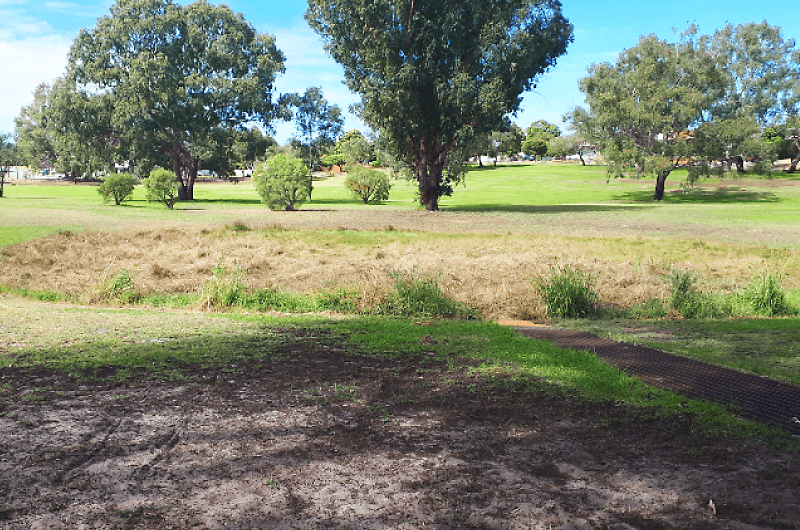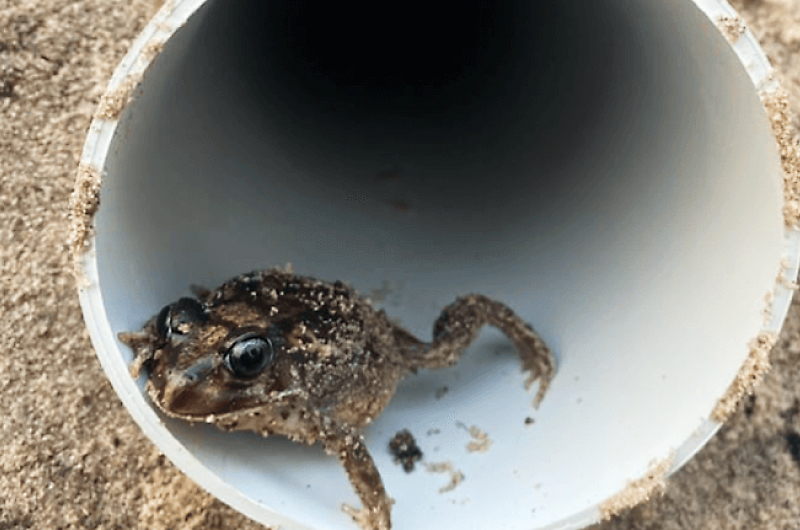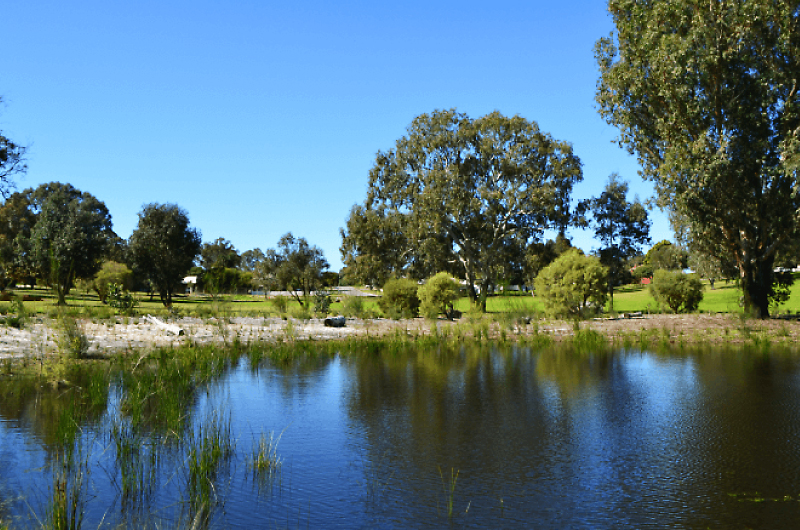Town of Bassendean
Key achievements
- The micro wetland provides amenities for residents, increased biodiversity and habitat for local fauna
- Opportunity for local residents to engage in regular planting
- Increase in birdlife with ducks nesting for the first time
With population increasing in urban areas, more paved surfaces and buildings are popping up per block than trees, backyards and open green spaces. Communities in these areas are increasingly feeling the heat, as changing climate is seeing temperatures rise, rainfall decrease and heatwaves intensify.
It’s known as the Urban Heat Island Effect. Urban areas are consistently hotter than country areas due to the removal of vegetation and natural cooling process, hardening of the landscape, and use of manmade materials, which can absorb more heat and then release it as the sun goes down.
In Perth’s heat-stressed areas, like the Town of Bassendean, it’s affecting local wildlife and causing heat stress to our most vulnerable people in the community – the sick, elderly and children.
Taking action at Mary Crescent Reserve
Street trees, parks, verges and green infrastructure can help reduce the heating effect. Trees and other plants can also have a positive impact by drawing soil moisture into their leaves, similar to how an evaporative cooler works.
Mary Crescent Reserve was selected as a project site for reducing the urban heat island effect. Consultation with the local community identified the stormwater basin as an area of interest for rehabilitation to increase the area's habitat, visual amenity and biodiversity values. Several community members were also interested in creating a healthier habitat for frogs in the basin.
The project aligned with several goals identified in the Town’s 2020-2030 Strategic Community Plan, including:
- Conserve, protect and enhance the natural environment and biodiversity
- Value and conserve and protect our water resources and waterways
- Support the creation of a more green and shaded Town
- Ensure major decision-making is informed by community feedback

Mary Crescent Reserve stormwater basin – before construction
Making a difference
As part of the Our Park Our Place project, we partnered with Greening Australia, Lotterywest, The Behaviour Change Collaboration, and Water Corporation’s Drainage for Liveability program to transform the basin into a thriving micro wetland. The area provides residents' amenities, increased reserve biodiversity and habitat for local fauna.
Through removing turf and creating native planting hydrozones, the Town plans to cap reticulation in the transformed areas once plants are established. We expect this will reduce water use in the park by 16%.
“The Mary Crescent micro wetland project has had a tremendous impact on the reserve with benefits to biodiversity, wildlife and the local community. There has been an increase in birdlife, with ducks nesting for the first time this year. There is now a huge dragonfly population, and frog species have returned.
Once a neglected overflow basin, the reimagined micro wetland is becoming the heart of the park, bringing enjoyment to the local community as we watch the vegetation grow and the wildlife return. It has also become an opportunity for local residents to engage in regular Eden Hill Community Action Network planting and maintenance events and connect with their community.”
How we did it
The basin was a big grass depression within the reserve, which required excavation. It was home to local frogs, so we had to consider the best way to look after them. Usually, frogs are moved to another location within the same reserve. On this occasion, there wasn’t another suitable habitat and transferring frogs to another reserve risked spreading disease to the transfer site. The solution was to create a ‘frog hotel’ on site, providing protection and a temporary habitat.
Works to create the micro wetland and new garden beds included:
- excavation of the basin to reduce slopes and increase the capacity of the basin
- removal of grass
- installation of jute matting to the high water mark to stabilise the drain edges whilst plants establish
- mulching
- ·native tubestock installation through a combination of community planting days, in-house and contractor works
- installation of paths, seating and a frog wheel

The frog hotel, which housed 20 local Moaning and Banjo frogs.
What we’re doing now
The once under-utilised basin continues to serve its purpose in flood prevention, with the added benefit of increasing biodiversity and liveability in the community.
Long term, it will increase tree canopy and green cover, creating a cooler environment. We’re also looking at how we can further reduce water use through the eventual capping of sprinklers in the hydrozoned areas, efficient irrigation and improving surface water quality through sedge plantings.

The new thriving micro wetland at Mary Crescent Reserve.